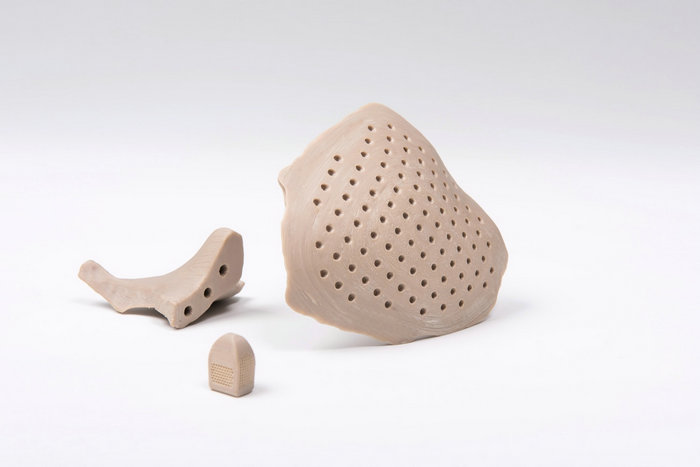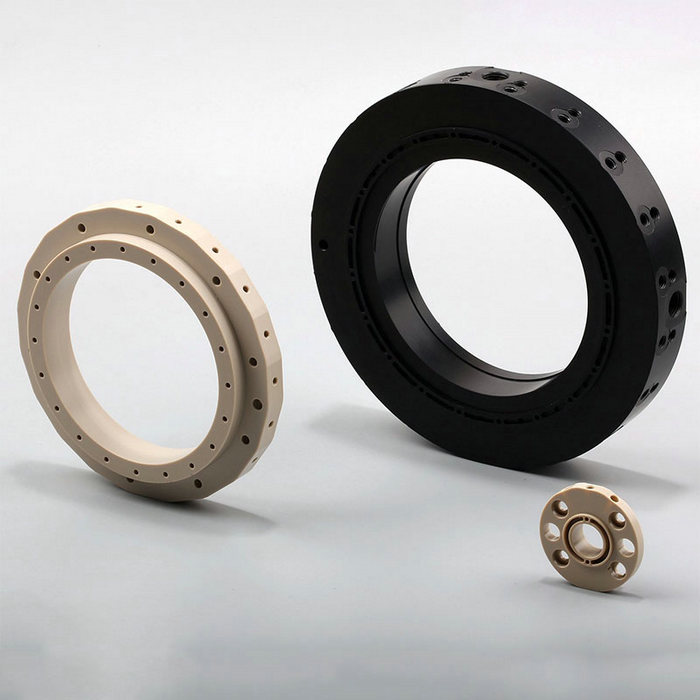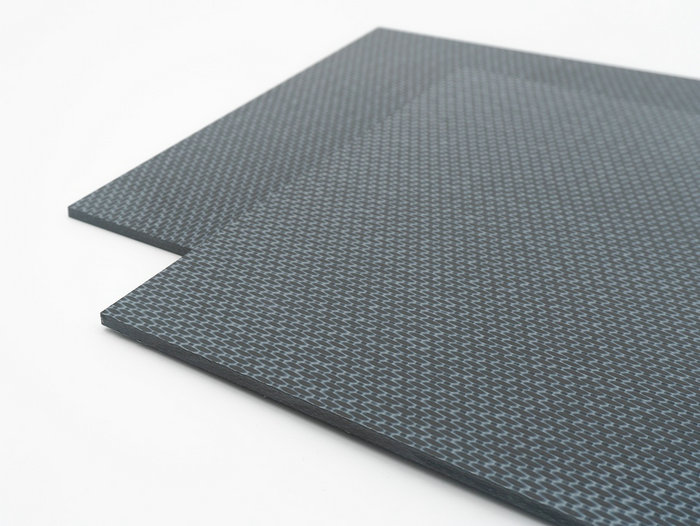
When you see the title, you may ask, why modify PEEK when it has such good and stable performance? Can it still be modified? The answer is yes.
Polyether ether ketone (PEEK) is one of the most widely used high-performance thermoplastic engineering plastics at present, with excellent mechanical properties and heat resistance, outstanding electrical insulation properties and high fatigue strength, stable chemical resistance, and excellent biocompatibility. It is widely used in aerospace, biomedical, marine protection, automotive industry, and other fields.
However, PEEK is a biologically inert material, and the biological inert surface and inherent chemical inertness of PEEK limit its application. Therefore, it is necessary to find a method to increase its surface activity and wear resistance without changing the advantages of PEEK itself, thus expanding its application fields.
Currently, the modification methods for PEEK mainly include: surface modification, filling modification, and polymer blending modification. Surface modification mainly involves modifying the surface of PEEK through physical or chemical techniques to increase its surface energy and promote the binding of biomolecules. Filling modification and blending modification are mainly applied in the preparation of composite materials to improve their tribological properties.

1, Surface Modification
PEEK has been widely used in the field of biomedical applications, especially in artificial bone joints. PEEK is a biologically inert material and does not cause adverse reactions when implanted in the human body. However, when direct bone integration between the implant and the host tissue is required, the low wettability of the PEEK surface limits cell adhesion and protein absorption, which reduces the wound healing ability of bone integration.
Surface modification performed by physical or chemical techniques can improve the surface activity of PEEK. Currently, the main surface modification methods include radiation treatment, plasma treatment, and chemical solution treatment, etc.
Radiation treatment has the characteristics of high resolution, high operation speed, and low cost, which can improve the surface activity of PEEK. For example, some researchers applied pulsed laser to modify the surface of PEEK and found that with the increase of laser power intensity, the contact angle of PEEK surface decreased, and the surface energy and shear bonding strength correspondingly increased.
Plasma treatment for surface modification is widely used in polymer materials. Researchers have applied plasma treatment to modify PEEK. The results show that there are polar groups (C=O and COO) on the surface of PEEK plasma, and the concentration of these polar groups is correlated with the surface free energy. The concentration of polar groups on the surface of PEEK treated with plasma is higher, which further increases the surface free energy.
In addition, chemical solution treatment can also improve the performance of PEEK. The ARK laboratory carried out surface phosphorylation of PEEK, and the results showed that PEEK modified by 30% phosphoric acid had the optimal surface activity, providing a more favorable surface for bone regeneration, which increased the potential of orthopedic and dental implants in future clinical applications.

2, Filling Modification
Filling modification typically involves adding reinforcing materials to the base material to achieve modification. For PEEK filling modification, fibers, metal oxides, and inorganic fillers can be added to the base material. This method can improve some of the defects of PEEK and greatly enhance the comprehensive performance of the material.
Carbon Fibers
Thermoplastic polymer composites reinforced with carbon fibers (CF) exhibit excellent properties such as high stiffness, high strength, good processability, and low coefficient of thermal expansion. Researchers have added CF to PEEK to improve its tribological properties.
ARKPEEK-CF prepared PEEK/CF composite materials using hot-pressing molding. The results show that the water contact angle of the composite material is smaller than that of pure PEEK, indicating improved surface wetting. When the CF content is 25%, the composite material exhibits the lowest friction coefficient and wear rate, approximately 0.11 and 2.5×10^-6 mm^3/(N·m), respectively.
Glass Fibers
Glass fibers (GF) are used as reinforcing materials in polymer materials due to their high stiffness, high modulus, and high load-carrying capacity. ARKPEEK-GF reinforced PEEK composite materials were studied for their friction and wear behavior under dry friction and water lubrication conditions. The results show that with the increase of load, the friction coefficient and wear rate of both PEEK and PEEK/GF composite materials gradually increase and eventually stabilize. Compared to pure PEEK, the friction coefficient and wear rate of PEEK/30%GF composite material under water lubrication conditions are 0.11 and 5×10^-5 mm^3/(N·m), respectively.
Metal Oxides
Abrasive particles typically possess characteristics such as high hardness and high brittleness, such as ZrO2, SiO2, and other ceramic particles. Filling metals and their oxides in PEEK can improve its mechanical and tribological properties.
Adding ZrO2 to PEEK can increase the microhardness of the composite material and improve its tribological properties. The lowest friction coefficient is observed in PEEK composite coatings filled with 5% ZrO2 nanoparticles, approximately 0.12, which is 49% lower compared to pure PEEK. The wear mechanism of PEEK/ZrO2 composite coatings is adhesive wear and mild abrasive wear. The addition of ZrO2 nanoparticles enhances the hardness of the composite material, thereby improving its tribological properties. To further enhance the performance of the composite material, metal oxide particles and fiber reinforcements can be simultaneously filled in PEEK, utilizing the composite effect of the reinforcement phase to improve PEEK's performance.
SiO2 nanoparticles and ZrO2 nanoparticles have similar physical properties. PEEKChina studied the addition of 7.5% SiO2 nanoparticles to PEEK reinforced with 7.5% short carbon fibers (SCF). The results indicate that SiO2 nanoparticles improve the weak interfacial bonding between the fibers and the matrix. Due to the stronger interfacial interaction between the filler and the matrix, the friction coefficient and wear rate of PEEK/SCF/SiO2 composite materials are 0.16 and 0.62×10^-6 mm^3/(N·m), respectively, which are 16% and 29% lower compared to composite materials without SiO2 addition.
Inorganic Fillers
Graphite possesses excellent electrical conductivity, thermal conductivity, chemical stability, and self-lubricating properties. Due to its outstanding performance, it is added as a reinforcing phase in various materials.
Adding graphite to PEEK can improve the tribological properties of composite materials, which has been extensively studied by researchers at ARK. PEEK/graphite composite materials have also been prepared, and studies have shown that compared to pure PEEK, PEEK/graphite has lower friction coefficients. This is because during the friction and wear process, the typical layered structure of graphite forms a self-lubricating film on the surface of the composite material. When the graphite content is 25%, the composite material exhibits the lowest friction coefficient and wear rate, approximately 0.35 and 7.0×10^-6 mm^3/(N·m), respectively. In addition, the smaller the particle size of graphite, the better the interface bonding, which can effectively improve the wear resistance and mechanical properties of the composite material.

3, Polymer Blending Modification
The basic principle of blending is the principle of miscibility, so the solubility values and surface tension between the materials to be blended must be similar. Composite materials prepared by blending PEEK with other high polymer materials can possess the comprehensive properties of blended materials. Here, we mainly introduce PTFE, polyphenylene sulfide (PPS), and polyethersulfone (PESU).
PTFE has many excellent properties, such as low friction, high temperature resistance, and stable chemical properties, making it an ideal filler. According to our research on PEEK/PTFE composite materials, as the PTFE content increases, the hardness and strength of the composite material decrease, the friction coefficient decreases, and the wear rate of the composite material first decreases and then increases. When the PTFE content is 5%, the composite material has the lowest wear rate, with a wear volume of approximately 1.0 mm^3 after 2 hours of dry friction. Other studies have shown that the wear rate of PEEK/PTFE composite material with 25% PTFE added is one-tenth of that of pure PEEK material.
Both PPS and PESU are high-performance thermoplastic engineering plastics with good mechanical properties and excellent chemical resistance. Research results show that the tensile strength and impact strength of PEEK/PPS composite materials are higher than those of pure PEEK, and the crystallinity of the composite material is also higher than that of pure PEEK.
ARK also prepared PEEK/PESU/CF composite coatings. The research results show that the main wear mechanism of PEEK is microcracking caused by fatigue failure; the wear of amorphous PESU is mainly due to the failure caused by transverse cracks in the plastic region. The addition of PESU improves the compatibility between fibers and matrix, thereby improving its tribological properties.
The common characteristics of polymer blending modification and filling modification are simple, efficient, and pollution-free modification methods. However, the blending modification of PEEK is limited to blending with other high polymers, restricting the addition of inorganic fillers, metals, and their oxides, which greatly limits the improvement of its hardness, strength, and other properties.